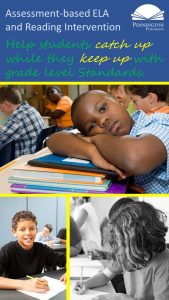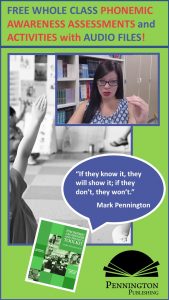Books for Struggling Readers
As a reading specialist, I’ve had the opportunity to work with students at the full spectrum of age groups from preK to adult ed. My passion has always been to help struggling readers, especially older readers. You find these students in reading intervention classes, ESL/ELD/ELL programs, special education classes, and learning centers.
Ask any reading teacher, who’s been there and done that, what is the key correlate to reading improvement for older struggling readers and you’ll hear the word, motivation, more often than not.
Long ago I learned the power of motivation upon student achievement. It took me awhile. In my sixth year of teaching I made a study of two teachers teaching my same subject, who were getting better results than I. I sat in their classes during my prep. Initially, I was confused.
“I’m at least as good as Mr. S,” I thought, “and I’m much better than Mr. B.”
I’ve never been diagnosed as “self-esteem deficient.”
However, I cornered some of Mr. S’s and Mr. B’s kids during passing periods and asked them, “What makes you succeed in his class?”
It was motivation. Mr. S loved kids and they knew it. He had the relationships in and out of class that made his students want to learn. Mr. B had a different approach: the behavioral approach of carrot and stick. Rewards and fear made his students have to learn.
I couldn’t be either teacher; Lame as it sounds: I had to be me. It took me years of experimenting and quite a few humbling make-overs to begin motivating some of my students.
My secret? What works for me is a constant self-reminder that I am teaching students, not reading. To really teach struggling readers how to improve their reading, teachers need to know what makes them tick and adapt instruction and teaching resources accordingly. For your struggling readers, you need the books that will motivate these older kids to read.
Even though I mentioned that I am not “self-esteem deficient,” my struggling readers certainly are. Despite the apathetic “I don’t care” self-defense mechanisms of most struggling readers, they really do care that they aren’t like the rest of their peers. No one want to stand out as a poor reader. I’ve never heard the most unreachable fourth grader, middle schooler, high schooler, or community college adult (and I’ve taught them all) say, “I’m a poor reader and proud of it.”
My main point in this article is to get reading teachers to be hypersensitive to the effects of motivation on learning to read. Specifically, we have got to stop unintentionally tearing away at the self-esteem of our struggling readers.
Take a moment to look at your teaching resources. Do they match the age of your students?
I just finished a comment on a teacher’s post asking for feedback on her self-authored ESL teaching resources and chapter books. I was struck by the beautiful cover illustrations. I previewed the book internal pages and the graphics and pictures were so professional. However, the images were perfectly appropriate for beginning readers, not her target grades 4‒8 age group. Struggling readers certainly do judge a book by its cover. Hopefully, my comments maintained a complimentary/constructive balance. Her self-esteem matters, as well!
ESL/ELD/ELL, special education, reading intervention, and adult ed learners need reading resources and books that motivate them to learn, not humiliate them into shutting down or acting out in the classroom.
Yes, these materials are hard to find.

Sam and Friends Phonics Books
So, I had to create my own. My Sam and Friends Guided Reading Phonics Books are the featured decodables in The Science of Reading Intervention Program and have been designed to motivate struggling readers.
The Sam and Friends Books (54 eight-page booklets) use teenage (non big-head) cartoons and plots. The illustrator, David Rickert, is a high school ELA teacher and we were both sensitive to ensuring that our visuals matched the maturity of our focus age group.
The latter product includes sound-spelling cards like most other reading programs. However, I selected animals as an ageless theme and photographs, not illustrations, to appeal to older kids.

The Science of Reading Intervention Program
The Science of Reading Intervention Program: Word Recognition includes explicit, scripted instruction and practice with the 5 Daily Google Slide Activities every reading intervention student needs: 1. Phonemic Awareness and Morphology 2. Blending, Segmenting, and Spelling 3. Sounds and Spellings (including handwriting) 4. Heart Words Practice 5. Sam and Friends Phonics Books (decodables). Plus, digital and printable sound wall cards and speech articulation songs. Print versions are available for all activities. First Half of the Year Program (55 minutes-per-day, 18 weeks)
The Science of Reading Intervention Program: Language Comprehension resources are designed for students who have completed the word recognition program or have demonstrated basic mastery of the alphabetic code and can read with some degree of fluency. The program features the 5 Weekly Language Comprehension Activities: 1. Background Knowledge Mentor Texts 2. Academic Language, Greek and Latin Morphology, Figures of Speech, Connotations, Multiple Meaning Words 3. Syntax in Reading 4. Reading Comprehension Strategies 5. Literacy Knowledge (Narrative and Expository). Second Half of the Year Program (30 minutes-per-day, 18 weeks)
The Science of Reading Intervention Program: Assessment-based Instruction provides diagnostically-based “second chance” instructional resources. The program includes 13 comprehensive assessments and matching instructional resources to fill in the yet-to-be-mastered gaps in phonemic awareness, alphabetic awareness, phonics, fluency (with YouTube modeled readings), Heart Words and Phonics Games, spelling patterns, grammar, usage, and mechanics, syllabication and morphology, executive function shills. Second Half of the Year Program (25 minutes-per-day, 18 weeks)
The Science of Reading Intervention Program BUNDLE includes all 3 program components for the comprehensive, state-of-the-art (and science) grades 4-adult full-year program. Scripted, easy-to-teach, no prep, no need for time-consuming (albeit valuable) LETRS training or O-G certification… Learn as you teach and get results NOW for your students. Print to speech with plenty of speech to print instructional components.
Get the SCRIP Comprehension Strategies FREE Resource:
![]()
Get the Diagnostic ELA and Reading Assessments FREE Resource:









